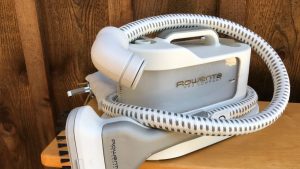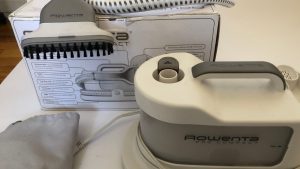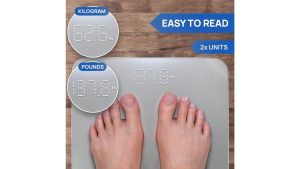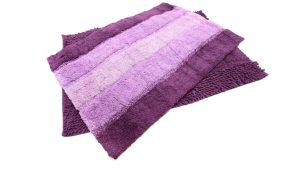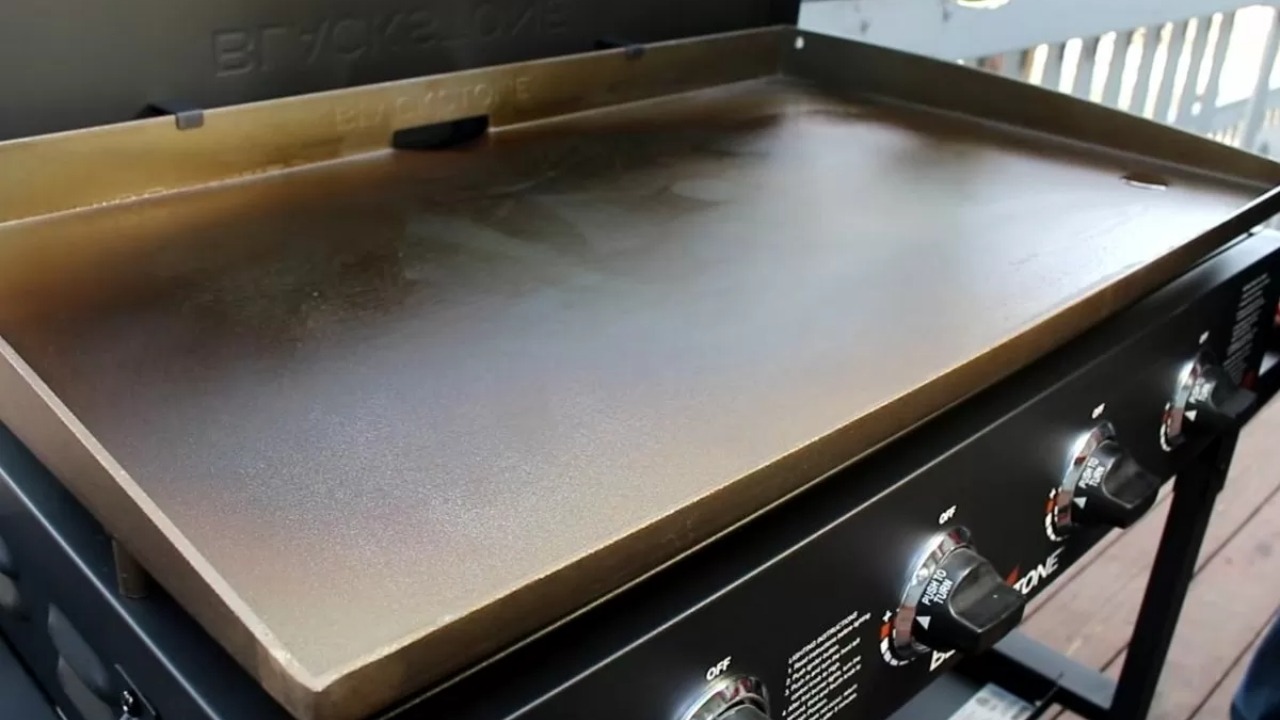How Do You Clean a Rowenta Iron
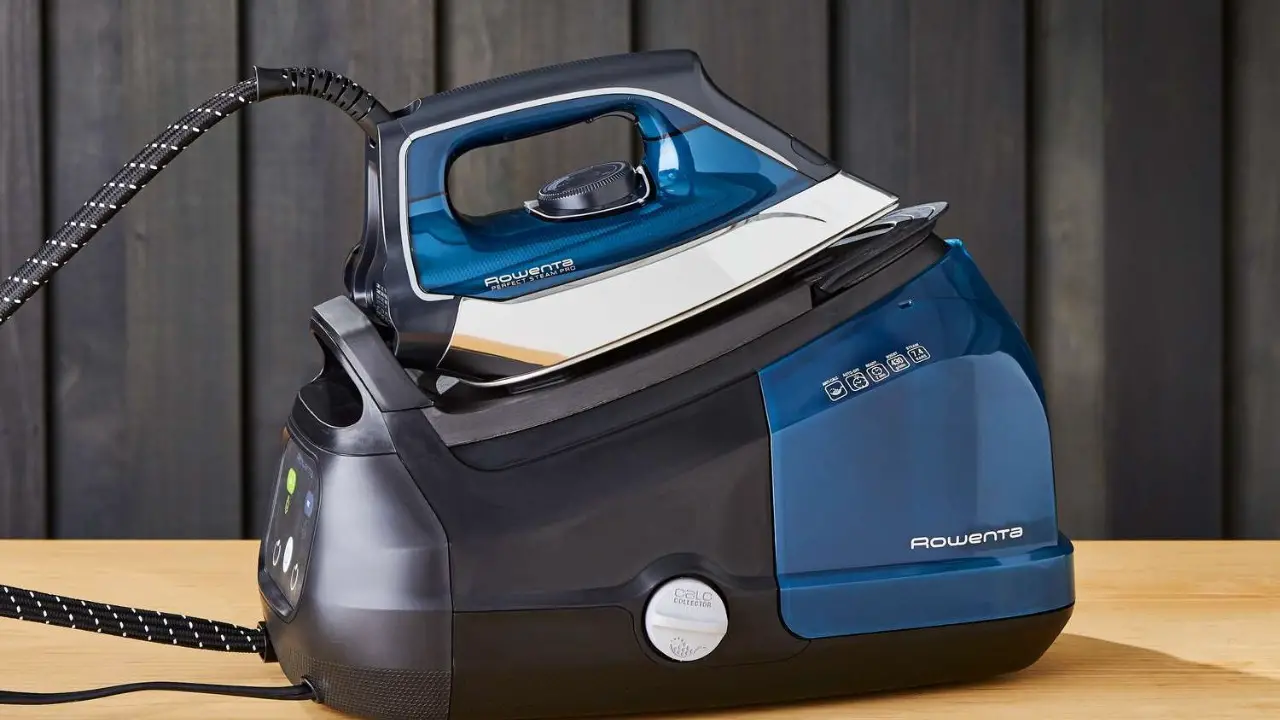
To clean a Rowenta iron, mix water and white vinegar, and fill the water tank. Then, let the iron steam for about 5 minutes to clear out any built-up mineral deposits.
Keeping your Rowenta iron clean is essential for maintaining its performance and extending its lifespan. Regular cleaning prevents mineral buildup and ensures smooth and efficient ironing. We will guide you through the simple steps to clean your Rowenta iron effectively.
We’ll cover everything from preparing the cleaning solution to steaming out any mineral deposits. By following these instructions, you can keep your iron in optimal condition, ensuring it continues to deliver crisp and wrinkle-free results every time you use it. Let’s get started with the cleaning process to maintain the functionality of your Rowenta iron.
Understanding The Importance Of Regular Maintenance
The importance of regular maintenance for your Rowenta iron cannot be overstated. Regular cleaning and maintenance ensure the longevity and optimal performance of your iron. Understanding the importance of maintaining a clean iron will not only extend the life of your appliance but also guarantee wrinkle-free, professional-looking results every time you use it. Below are the key aspects to consider when it comes to understanding the importance of regular maintenance for your Rowenta iron.
Importance Of Maintaining A Clean Iron
Regularly cleaning your Rowenta iron is crucial for maintaining its efficiency and prolonging its life span. By keeping your iron clean, you prevent dirt, mineral deposits, and other residue from building up and causing damage to the iron’s soleplate and internal components. A clean iron ensures smooth gliding over your garments, preventing stains or burns caused by residue transfer onto the fabric. Additionally, cleaning your iron helps maintain proper steam flow and heat distribution, resulting in better ironing performance.
Impact Of Dirt And Residue On Iron Performance
Accumulated dirt and residue can have a significant impact on your iron’s performance. It can lead to uneven heat distribution, clogged steam vents, and reduced steam output, ultimately affecting the quality of your ironing. This buildup can also result in stains on your clothing due to the transfer of residue from the iron onto your garments. By maintaining a clean iron, you can avoid these performance issues, ensuring that your iron operates at its best, delivering professional results with every use.
Tips For Identifying When Your Iron Needs Cleaning
- Check for visible residue or discoloration on the soleplate of the iron.
- Observe a decrease in steam output or uneven distribution of heat during ironing.
- Notice a sputtering sound while using the steam function, indicating potential blockages in the steam vents.
Materials Needed For Cleaning
When it comes to maintaining the performance and longevity of your Rowenta iron, regular cleaning is essential. To properly clean your iron, you’ll need to gather some essential cleaning supplies, including safe and effective cleaning solutions and recommended cleaning tools.
Gathering Essential Cleaning Supplies
Before you begin the cleaning process, it’s important to ensure you have the necessary supplies on hand. Here’s a list of materials you’ll need for cleaning your Rowenta iron:
- White vinegar: This natural cleaning solution is effective at removing mineral deposits and built-up residue from the iron’s soleplate.
- Baking soda: A mild abrasive that can be used to gently scrub away stubborn stains on the soleplate.
- Clean water: Distilled water is recommended for cleaning the water reservoir to prevent mineral buildup.
- Cotton swabs: Ideal for reaching into small crevices and vents for thorough cleaning.
- Lint-free cloths: Use these soft, non-abrasive cloths for wiping down the iron’s exterior and soleplate.
- Protective gloves: To protect your hands during the cleaning process, especially when using cleaning solutions.
Safe And Effective Cleaning Solutions For Rowenta Irons
Using safe and effective cleaning solutions is crucial to avoid damaging your Rowenta iron. Here are some recommended cleaning solutions for maintaining your iron:
- Vinegar solution: A mixture of equal parts white vinegar and water can be used to clean the soleplate and remove mineral deposits.
- Baking soda paste: Mixing baking soda with a small amount of water creates a paste that can be applied to the soleplate to remove tough stains.
- Commercial iron cleaner: Some specially formulated iron cleaners are available for tackling more stubborn residue and mineral buildup.
Recommended Cleaning Tools
In addition to cleaning solutions, using the right tools can make the cleaning process more efficient. Here’s a list of recommended cleaning tools for cleaning your Rowenta iron:
- Soft-bristled brush: Use a soft-bristled brush to gently scrub the soleplate and remove any residue.
- Cotton swabs: These are perfect for reaching into small spaces and vents for thorough cleaning.
- Lint-free cloths: Use soft, non-abrasive cloths for wiping down the iron’s exterior and soleplate.
- Distilled water: When refilling the water reservoir, it’s recommended to use distilled water to prevent mineral buildup.
Step-by-step Cleaning Process
Cleaning your Rowenta iron is a crucial maintenance task to ensure it operates efficiently and keeps your clothes looking sharp. The step-by-step cleaning process involves preparing the iron for cleaning, removing mineral deposits and stubborn stains, and ensuring the iron is thoroughly clean and residue-free.
Preparing The Iron For The Cleaning Process
Before you begin cleaning your Rowenta iron, it’s essential to unplug it and allow it to cool down completely. After cooling, wipe the soleplate with a damp cloth to remove any loose dirt or debris. This step ensures the iron is ready for the deep cleaning process.
Removing Mineral Deposits And Stubborn Stains
To tackle mineral deposits and stubborn stains on the soleplate, create a solution of equal parts water and white vinegar. Dip a soft cloth or sponge into the solution and gently scrub the soleplate, focusing on the areas with build-up. For tougher stains, use a non-abrasive cleaning paste and a soft-bristled brush. This method effectively removes the mineral deposits and tough stains, restoring the soleplate to its original condition.
Ensuring The Iron Is Thoroughly Clean And Residue-free
After removing the mineral deposits and stains, wipe the soleplate with a clean damp cloth to remove any remaining residue. Once the soleplate is clean, fill the water tank with distilled water and turn on the steam function to flush out any remaining residue or cleaning solution. Finally, wipe the soleplate with a dry cloth to ensure it is completely clean and residue-free.
Preventative Maintenance Tips
Proper care and maintenance are crucial for ensuring the longevity and performance of your Rowenta iron. By incorporating preventative maintenance tips into your cleaning routine, you can effectively prevent future build-up and damage, maintain cleanliness through proper storage, and establish a regular maintenance schedule for optimal iron performance.
Tips For Preventing Future Build-up And Damage
Preventing future build-up and damage to your Rowenta iron can be achieved through simple yet effective measures:
- Use distilled water: Minimize mineral build-up by using distilled water instead of tap water to fill the water reservoir.
- Clean the iron after each use: Wipe the iron’s soleplate with a damp cloth and remove any residue to prevent accumulation.
- Avoid overheating: Prevent overheating by using the iron at the recommended temperature settings for different fabrics.
- Regularly inspect the iron: Check the iron for any signs of wear or damage and address issues promptly to prevent further deterioration.
Proper Storage To Maintain Cleanliness
Proper storage is essential for maintaining the cleanliness of your Rowenta iron and preventing dust and debris from accumulating:
- Allow the iron to cool: Always ensure the iron has cooled down before storing it to avoid heat-related damage and promote air circulation.
- Store in an upright position: Storing the iron in an upright position can prevent the soleplate from coming into contact with surfaces that may cause scratches or build-up.
- Use a protective cover: Consider using a protective cover or cloth to shield the iron from dust and maintain a clean exterior.
Regular Maintenance Schedule For Optimal Iron Performance
Establishing a regular maintenance schedule is essential for optimizing the performance of your Rowenta iron:
- Descale the iron: Regularly descaling the iron to remove mineral deposits can help maintain its efficiency and prevent clogging.
- Inspect and replace components: Check the water tank, cords, and other components for any signs of damage or wear, and replace them as needed to ensure consistent performance.
- Professional servicing: Consider professional servicing or maintenance to address any internal issues and prolong the life of your iron.
Expert Tips For Long-term Care
Maintaining your Rowenta iron is crucial for its longevity and optimal performance. Implementing a regular cleaning and maintenance routine will prolong the life of your iron and ensure that it continues to produce wrinkle-free garments effortlessly. This article provides expert tips, additional care guidelines, troubleshooting advice, and professional recommendations to keep your Rowenta iron in top condition for the long haul.
Additional Care Tips For Extending The Lifespan Of Your Rowenta Iron
- Use distilled water: Avoid using tap water in your iron, as minerals can build up and cause blockages in the steam vents.
- Empty the water reservoir after each use: Prevent mineral buildup and potential leakage by emptying the water reservoir when you finish ironing.
- Clean the soleplate regularly: Wipe the soleplate with a damp cloth while the iron is warm to remove any residue or stains.
- Store the iron properly: Allow the iron to cool completely before storing it, and make sure the cord is wrapped neatly to avoid damage.
- Avoid using spray starch: Sprays can leave residue on the soleplate, leading to potential staining and decreased performance.
Troubleshooting Common Issues And Maintenance Mistakes
It’s essential to be aware of common issues and mistakes that can affect the performance of your Rowenta iron. Some common problems include:
- Mineral buildup: If you notice a decrease in steam output or uneven heat distribution, mineral buildup may be the culprit.
- Leaking water: This can be caused by overfilling the water reservoir or using tap water with high mineral content.
- Sticking soleplate: Residue or fabric buildup on the soleplate can cause it to stick to garments, leading to potential damage.
Professional Recommendations For Keeping Your Iron In Top Condition
| Professional Recommendations |
|---|
| Regular descaling: Perform regular descaling using a descaling solution to remove mineral deposits. |
| Attend to issues promptly: Address any performance issues immediately to prevent further damage. |
| Follow manufacturer instructions: Adhere to the manufacturer’s guidelines for cleaning and maintenance to ensure optimum performance. |
Frequently Asked Questions For How Do You Clean A Rowenta Iron
Can You Use Vinegar To Clean Rowenta Iron?
Yes, you can use vinegar to clean your Rowenta iron. Mix equal parts of vinegar and water, then fill the iron’s water reservoir. Turn it on, set it to steam, and press the steam button until the reservoir is empty. Finally, refill with clean water and discard the remaining liquid.
How Can I Clean The Inside Of My Iron?
To clean the inside of your iron, mix equal parts of water and vinegar. Fill the water reservoir with the solution and turn the iron to its highest setting. Steam out the solution and then refill the reservoir with plain water and steam out any remaining residue. Wipe the soleplate with a clean cloth.
How Long Should A Rowenta Steam Iron Last?
A Rowenta steam iron should last for several years with proper care and maintenance. Regular cleaning and descaling can help prolong its lifespan. However, the exact duration can vary based on usage and quality of the iron.
Why Is My Rowenta Iron Leaking Brown Water?
Your Rowenta iron may be leaking brown water due to built-up mineral deposits in the water tank. Regularly using distilled or demineralized water and cleaning the iron’s soleplate can help prevent this issue. Regular maintenance and descaling can improve the iron’s performance.
How do I clean my Rowenta iron?
To clean your Rowenta iron, start by ensuring it’s unplugged and cooled. Wipe the soleplate with a damp cloth. For stubborn residues, mix equal parts of water and vinegar, apply to the soleplate, and wipe. Clean steam vents with a cotton swab.
Can I use any cleaning solution?
It’s recommended to use a mixture of water and vinegar. Avoid abrasive or harsh cleaners, as they may damage the iron.
How often should I clean my iron?
Regular maintenance is key. Clean the iron every 1-2 months, depending on usage. If you notice stains or sticking, clean it promptly.
What if my iron has a self-cleaning function?
Follow the manufacturer’s instructions for the self-cleaning feature. It’s an efficient way to remove impurities and maintain optimal performance.
Is it safe to clean while the iron is hot?
No, always wait for the iron to cool down before cleaning to avoid burns or damage to the cleaning materials.
How do I prevent mineral buildup in my Rowenta iron?
Use distilled water instead of tap water to minimize mineral deposits. This reduces the risk of clogging and enhances the longevity of your iron.
Can I clean the water reservoir separately?
Yes, regularly clean the water reservoir by rinsing it with a mild solution of water and vinegar. Ensure it’s thoroughly dry before refilling.
What if my iron has a calc-away system?
If your Rowenta iron features a calc-away system, follow the instructions in the manual. This system helps eliminate calcification, ensuring optimal steam performance.
Are there any precautions during the cleaning process?
Avoid using abrasive materials on the soleplate, as they can scratch the surface. Gentle cleaning methods, like using a soft cloth, are recommended.
What if my iron still has issues after cleaning?
If problems persist, consult the troubleshooting section of your manual or contact Rowenta customer support for guidance tailored to your specific concerns.
Conclusion
Maintaining your Rowenta iron is crucial for its longevity. Regular cleaning with water and vinegar solution is an effective way to remove mineral deposits. Remember to wipe the soleplate and descale the iron as needed. By following these steps, you can ensure that your Rowenta iron remains in top-notch condition for years to come.

